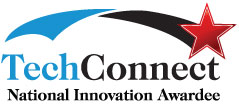TECHNOLOGY SUMMARY
According to the Center for Disease Control and Prevention, about 48 million people per year get sick from foodborne illnesses. Field deployable sensors that enable real-time detection of pathogens are needed to prevent this problem. Although many sensors have been used on an ad-hoc basis for specific issues, not many have the potential for commercialization or being used for on-field measurements, which is an area of concern. Ohio University has demonstrated a novel electrochemical method to detect Escherichia coli (E. coli) in water: the electrochemical microbial sensor (EMS). The method consists of applying an electrical field to a sample and measuring the current. E. coli interacts with a locally formed nano-electrocatalyst leading to a change in the current as a function of the E. coli concentration. A portable EMS has demonstrated short response time (less than 5 minutes) and promising experimental uncertainty (2-10%) when compare with the standard plate count for enumeration of microbes. In summary, an electrochemical biosensor that combines the advantages of the label-independent with the detection limit of the label-dependent, utilizing relatively cheap materials, and simplified electrode configuration, advances the practicality and feasibility of electrochemical biosensors for E. coli and other pathogens detection in food.
AREA/MATURITY/AWARDS
Primary Application Area: Electronics, Sensors, Communications
Technology Development Status: Prototype
Technology Readiness Level: TRL 4
SHOWCASE SUMMARY
Organization Type: Academic/Gov Lab

Showcase Booth #: 331
GOVT/EXTERNAL FUNDING SOURCES
External Funding to Date: $310,325; Bill and Melinda Gates Foundation; December 1 2016 – May 31 2018